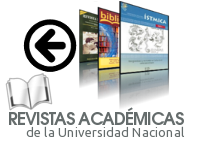Editorial: the historical thought and legacy of Dr. Peter Seixas
DOI:
https://doi.org/10.15359/rp.28.1.enKeywords:
editorial, historical thought, history, Peter Seixas, Social StudiesAbstract
Despite the huge gap between the practices of the historical discipline and what is possible in school history, Seixas was convinced that historical thinking can make an important contribution to the teaching of history by using and conceptualizing the tools, processes and ways of historical thinking that help students understand who they are, where they are and what they can do (as individuals, as members of multiple intersecting groups, and as citizens with roles or responsibilities in a complex, conflict-ridden and rapidly changing world). To meet these important challenges, new theoretical, empirical and practical advances are required.More theoretical work is needed to articulate the purposes of history teaching that can be applied in multiple contexts and accommodate diverse forms of historical consciousness.
References
Acton, L. (1906). Inaugural Lecture on the Study of History. Edited by J. N. Figgis & R. V. Lecturer on Modern History. London: Macmillan. http://files.libertyfund.org/files/209/Acton_0028_EBk_v5.pdf
Berg, C. W. & T. M. Christou. (2020). The Palgrave Handbook of History and Social Studies Education. Cham: Springer International Publishing.
Bracke, S., C. Flaving, M. Köster & M. Zulsdorf-Kersting. (2014). “History Education Research in Germany.” In Researching History Education, edited by M. Köster, H. Thunemann & M. Zulsdorf-Kersting, 9-55. Schwalbach: Wochenschau Verlag.
Breakstone, J., M. Smith & S. S. Wineburg. (2013). “Beyond the Bubble in History/Social Studies Assessments”. Phi Delta Kappan 94 (5): 93-97.
Crocco, M. S. (2018). “Gender and Sexuality in History Education”. En: The Wiley International Handbook of History Teaching and Learning, edited by S. A. Metzger and L. M. Harris, 335-64. Hoboken, NJ: John Wiley & Sons, Inc.
De La Paz, S., M. Felton, C. Monte-Sano, R. Croninger, C. Jackson, J. S. Deogracias & B. P. Hoffman. (2014). “Developing Historical Reading and Writing with Adolescent Readers: Effects on Student Learning”. Theory and Research in Social Education 42 (2): 228-74.
Epstein, T. (2008). Interpreting National History: Race, Identity, and Pedagogy in Classrooms and Communities. New York: Routledge. https://doi.org/10.4324/9780203890967
Gibson, L., A. Milligan & C. L. Peck. (2022). “Addressing the elephant in the room: Ethics as an organizing concept in history education”. Historical Encounters, 9(2): 45-63. https://doi.org/10.52289/hej9.205
Harris, L. M. & S. A. Metzger, eds. (2018). The Wiley International Handbook of History Teaching and Learning. 1st ed. Wiley Handbooks in Education. Hoboken, NJ: Wiley-Blackwell.
Körber, A. (2011). “German History Didactics”. En: Historicizing the Uses of the Past: Scandinavian Perspectives on History, Culture, Historical Consciousness and Didactics of History Related to World War II, edited by H. Bjerg, C. Lenz & E. Thorstensen, 145-64. New Brunswick, NJ: Transaction Publishers.
Jeismann, K.-E. (1977). “Didaktik Der Geschichte. Die Wissenschaft von Zustand, Funktion Und Veränderung Geschichtlicher Vorstellungen Im Selbstverständnis Der Gegenwart”. En: Geschichtswissenschaft. Didaktik, Forschung, Theorie, edited by E. Kosthorst & K. E. Jeismann, 9-33. Göttingen: Vandenhoeck & Ruprecht.
McGregor, H. E. (2017). “One Classroom, Two Teachers? Historical Thinking and Indigenous Education in Canada”. Critical Education, 8(14): 1-18.
Parkes, R. J. (2009). “Teaching History as Historiography: Engaging Narrative Diversity in the Curriculum”. International Journal of Historical Learning, Teaching, and Research, 8(2): 118-32.
Peck, C. L. (2010). “‘It’s Not like [I’m] Chinese and Canadian. I Am in between’: Ethnicity and Students’ Conceptions of Historical Significance”. Theory & Research in Social Education 38 (4): 574-617.
Reisman, A. (2012). “Reading like a Historian: A Document-Based History Curriculum Intervention in Urban High Schools”. Cognition and Instruction 31 (1): 86-112.
Segall, A. (2006). “What’s the Purpose of Teaching the Disciplines, Anyway? The Case of History”. In Social Studies - the next Generation: Re-Searching in the Postmodern, edited by A. Segall, E. E. Heilman & C. H. Cherryholmes, 125-39. New York: Peter Lang.
Segall, A., B. M. Trofanenko & A. J. Schmitt. (2018). “Critical Theory and History Education”. En: The Wiley International Handbook of History Teaching and Learning, edited by L. M. Harris & S. A. Metzger, 281-309. Wiley Handbooks in Education. Hoboken, NJ: Wiley-Blackwell.
Seixas, P. (2009). “A Modest Proposal for Change in Canadian History Education”. Teaching History, 137: 26-30.
Seixas, P. (2017a). “A Model of Historical Thinking”. Educational Philosophy and Theory, 49(6): 593-605.
Seixas, P. (2017b). “Historical Consciousness and Historical Thinking”. En: Palgrave Handbook of Research in Historical Culture and Education, edited by M. Carretero, S. Berger & M. Grever, 59-72. London, UK: Palgave Macmillan.
Shemilt, D. (1980). Evaluation Study: Schools Council History 13-16 Project. Holmes McDougall.
Thornton, S. J. & K. C. Barton. (2010). “Can History Stand Alone? Drawbacks and Blind Spots of a ‘Disciplinary’ Curriculum”. Teachers College Record, 112(9): 2471-95.
VanSledright, B. A. (2011). The Challenge of Rethinking History Education: On Practices, Theories, and Policy. New York: Routledge.
Wineburg, S. S. (1991). “On the Reading of Historical Texts: Notes on the Breach between the School and the Academy”. American Educational Research Journal, 28(3): 495-519.
Wineburg, S. S. (2018). Why Learn History (When It’s Already on Your Phone). Chicago: The University of Chicago Press.
Wineburg, S. S., D. Martin & C. Monte-Sano. (2013). Reading like a Historian: Teaching Literacy in Middle and High School History Classrooms. New York: Teachers College Press.
Published
How to Cite
Issue
Section
License

This work is licensed under a Creative Commons Attribution-NonCommercial-ShareAlike 4.0 International License.
Los autores que publican en esta revista están de acuerdo con los siguientes términos:
a) Los autores conservan los derechos de autor y garantizan a la revista el derecho de ser la primera publicación del trabajo bajo una Licencia Creative Commons Atribución-NoComercial-CompartirIgual 4.0 Internacional (https://creativecommons.org/licenses/by-nc-sa/4.0/) que permite a otros compartir el trabajo con un reconocimiento de la autoría del trabajo y la publicación inicial en esta revista (componente BY o atribución). Coincidente con la política de Acceso Abierto, no se podrán hacer usos comerciales de los contenidos publicados por esta revista (componente NC). Se permitirán las obras derivadas (remezcla, transformación o creación a partir de la obra original) siempre y cuando sean distribuidas bajo la misma licencia de la obra original (componente SA).
b) Los autores pueden establecer por separado acuerdos adicionales para la distribución no exclusiva de la versión original de la obra publicada en la revista (por ejemplo, situarlo en un repositorio institucional o publicarlo en un libro), siempre y cuando: a) sea reconocida la publicación original en esta revista (componente BY); b) no se haga uso del material de reuso con propósitos comerciales (componente NC); c) el material de reuso sea distribuido bajo la misma licencia de la obra original (componente SA).
c) Se permite y se anima a los autores a difundir sus trabajos electrónicamente (por ejemplo, en repositorios institucionales o en su propio sitio web) antes y durante el proceso de envío, ya que puede dar lugar a intercambios productivos, así como a una citación más temprana y mayor de los trabajos publicados (Véase The Effect of Open Access) (en inglés).


_11.55_.09_a_._m_._.png)
_1.34_.01_p_._m_._2.png)
_9.45_.02_p_._m_._.png)




_2.23_.09_p_._m_._.png)
_2.35_.17_p_._m_._.png)

